Slide 15 -2 INTEGRATED MARKETING COMMUNI- CATIONS CHAPTER















































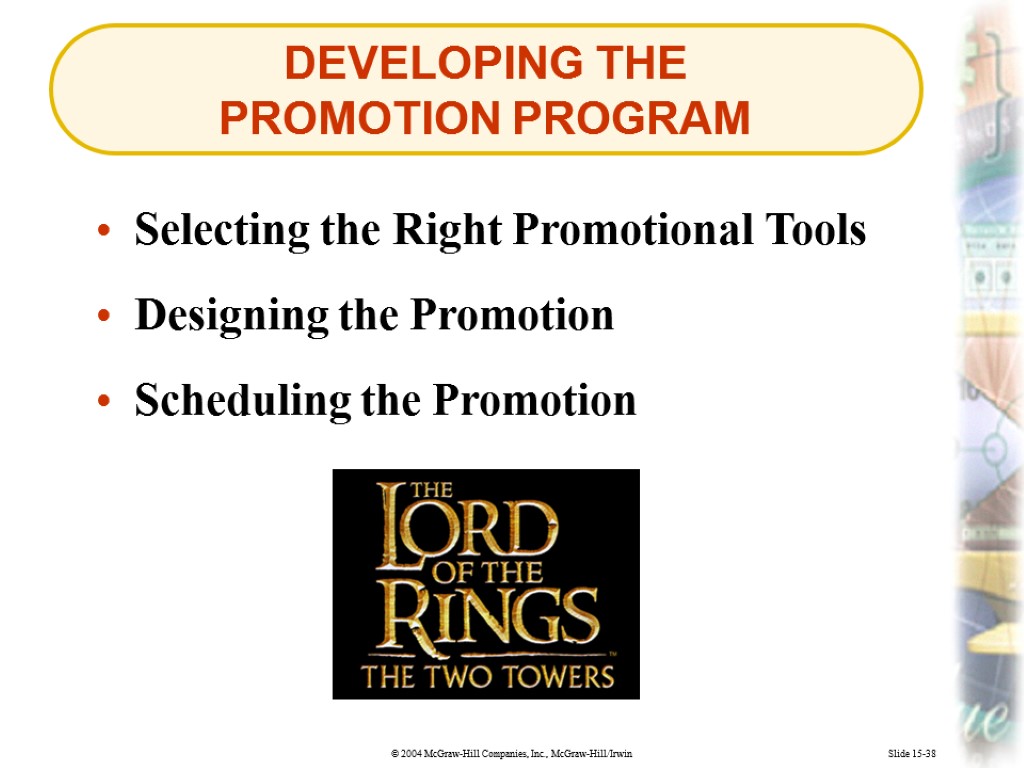

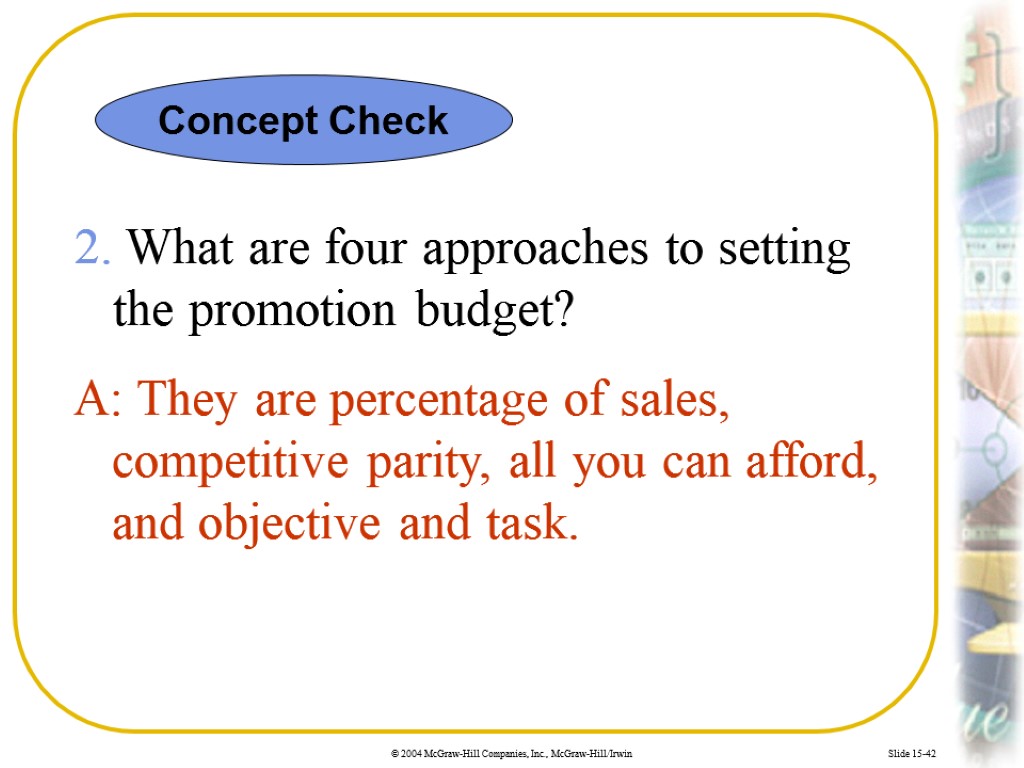
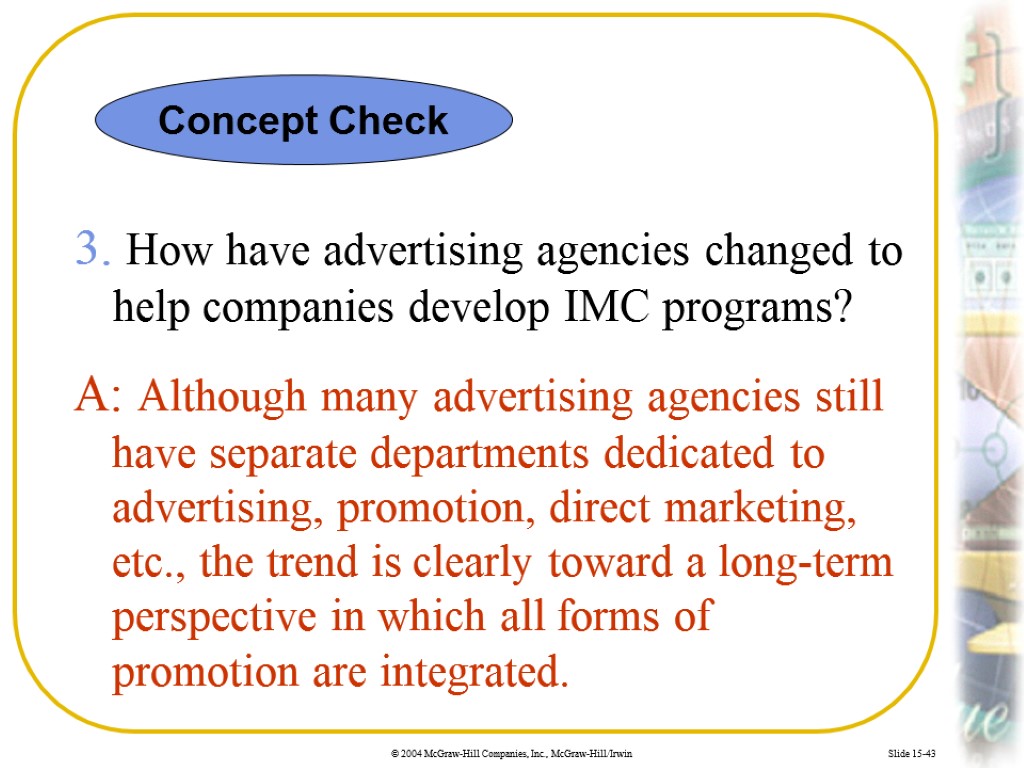

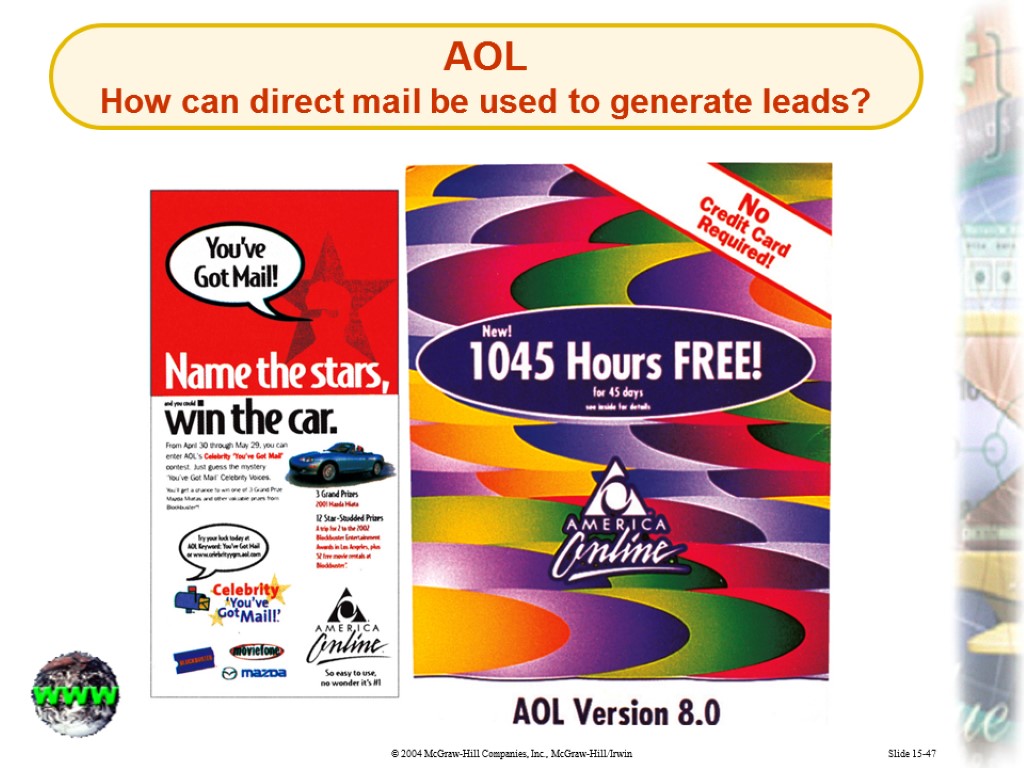
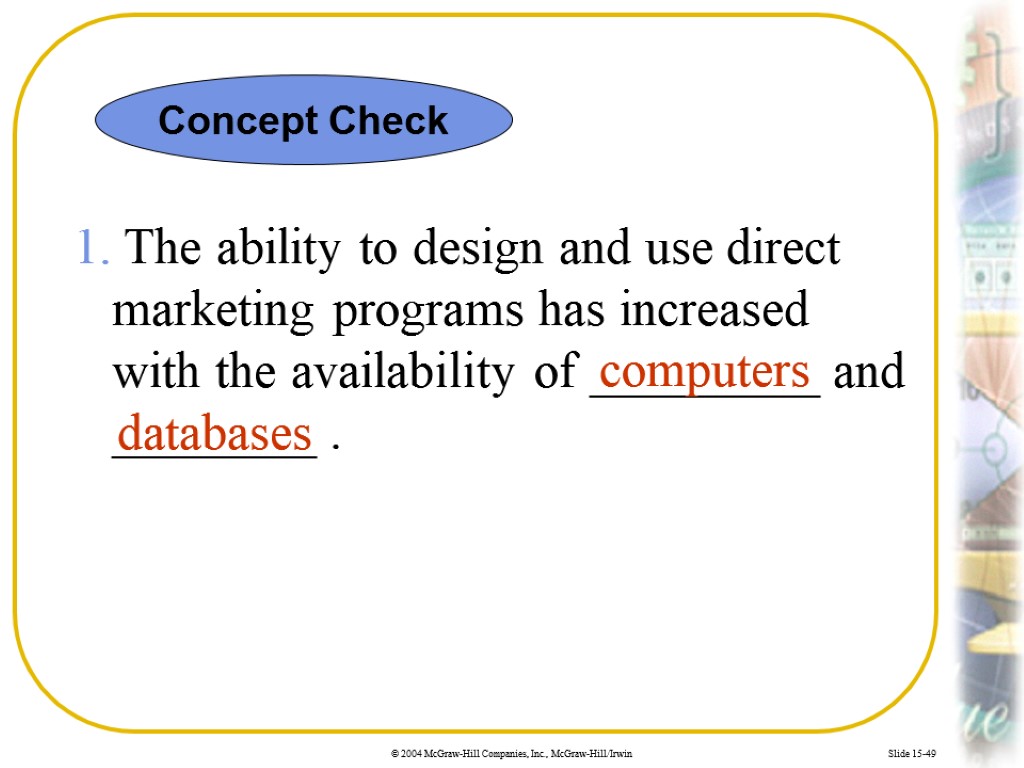
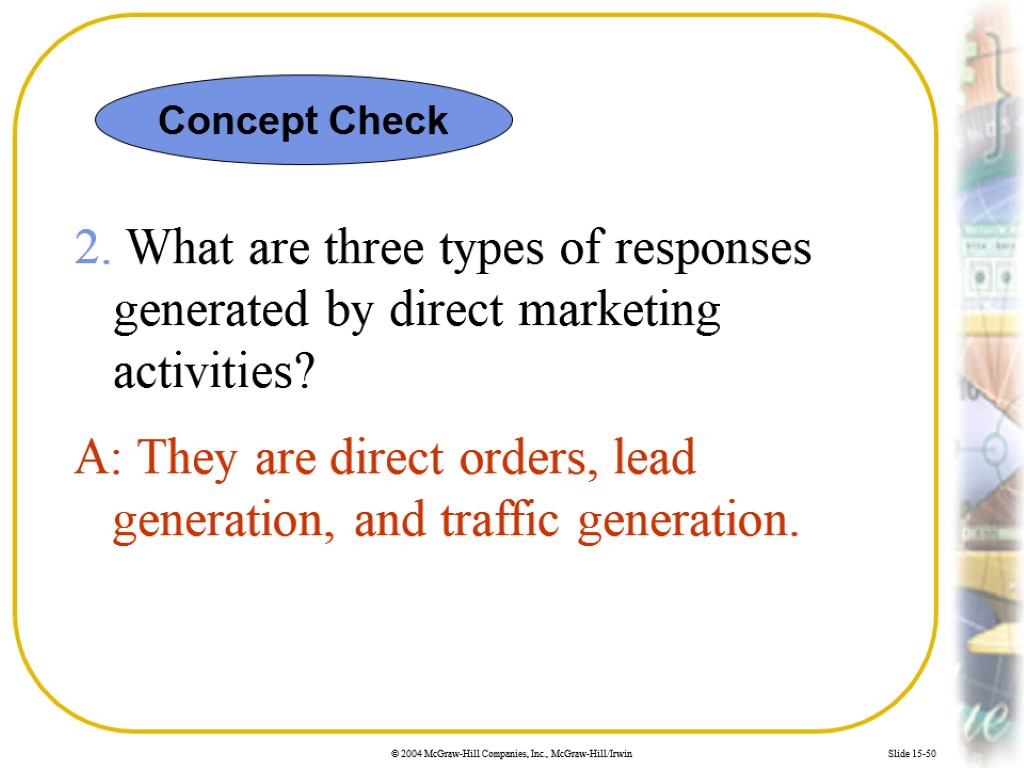
questions_2,_55_-_lecture11.ppt
- Количество слайдов: 55
 Slide 15-2 INTEGRATED MARKETING COMMUNI- CATIONS CHAPTER Lecture 11_ Integrated marketing communications Associate professor of Plekhanov REA marketing department Irina I.Skorobogatykh (Ph.D)
Slide 15-2 INTEGRATED MARKETING COMMUNI- CATIONS CHAPTER Lecture 11_ Integrated marketing communications Associate professor of Plekhanov REA marketing department Irina I.Skorobogatykh (Ph.D)
 Slide 15-5 LEVTURE QUESTIONS: Explain the communication process and its elements. Understand the promotional mix and the uniqueness of each component. Select the promotional approach appropriate to a product’s life-cycle stage.
Slide 15-5 LEVTURE QUESTIONS: Explain the communication process and its elements. Understand the promotional mix and the uniqueness of each component. Select the promotional approach appropriate to a product’s life-cycle stage.
 Slide 15-6 LECTURE QUESTIONS: Differentiate between the advantages of push and pull strategies. Explain the value of an integrated marketing communications approach. Understand the value of direct marketing for consumers and sellers.
Slide 15-6 LECTURE QUESTIONS: Differentiate between the advantages of push and pull strategies. Explain the value of an integrated marketing communications approach. Understand the value of direct marketing for consumers and sellers.
 THE COMMUNICATION PROCESS Slide 15-8 Communication Source Message Channel of Communication Receivers Promotional Mix
THE COMMUNICATION PROCESS Slide 15-8 Communication Source Message Channel of Communication Receivers Promotional Mix
 Slide 15-71 Communication is the process of conveying a message to others and requires six elements: a source, a message, a channel of communication, a receiver, and the processes of encoding and decoding. Communication
Slide 15-71 Communication is the process of conveying a message to others and requires six elements: a source, a message, a channel of communication, a receiver, and the processes of encoding and decoding. Communication
 Slide 15-9 The communication process
Slide 15-9 The communication process
 Slide 15-72 The source may be a company or person who has information to share. Source
Slide 15-72 The source may be a company or person who has information to share. Source
 Slide 15-73 The message is the information sent. Message
Slide 15-73 The message is the information sent. Message
 Slide 15-74 A channel of communication conveys the message by means of a salesperson, advertising media, or public relations tools. Channel of Communication
Slide 15-74 A channel of communication conveys the message by means of a salesperson, advertising media, or public relations tools. Channel of Communication
 Slide 15-75 Receivers are consumers who read, hear, or see the message. Receivers
Slide 15-75 Receivers are consumers who read, hear, or see the message. Receivers
 THE COMMUNICATION PROCESS Slide 15-10 Encoding Encoding and Decoding Decoding Field of Experience
THE COMMUNICATION PROCESS Slide 15-10 Encoding Encoding and Decoding Decoding Field of Experience
 Slide 15-76 Encoding is the process of having the sender transform an idea into a set of symbols. Encoding
Slide 15-76 Encoding is the process of having the sender transform an idea into a set of symbols. Encoding
 Slide 15-77 Decoding is the process of having the receiver take a set of symbols, the message, and transform them back to an idea. Decoding
Slide 15-77 Decoding is the process of having the receiver take a set of symbols, the message, and transform them back to an idea. Decoding
 Slide 15-78 A field of experience is a mutually shared understanding and knowledge by the sender and receiver, which is necessary for the message to be communicated effectively. Field of Experience
Slide 15-78 A field of experience is a mutually shared understanding and knowledge by the sender and receiver, which is necessary for the message to be communicated effectively. Field of Experience
 THE COMMUNICATION PROCESS Slide 15-12 Feedback Loop Feedback Response Feedback Pretesting Noise
THE COMMUNICATION PROCESS Slide 15-12 Feedback Loop Feedback Response Feedback Pretesting Noise
 Slide 15-79 A response is the impact the message had on the receiver’s knowledge, attitudes, or behaviors. Response
Slide 15-79 A response is the impact the message had on the receiver’s knowledge, attitudes, or behaviors. Response
 Slide 15-80 Feedback is the sender’s interpretation of the response and indicates whether the message was decoded and understood as intended. Feedback
Slide 15-80 Feedback is the sender’s interpretation of the response and indicates whether the message was decoded and understood as intended. Feedback
 Slide 15-81 Noise includes extraneous factors that can work against effective communication by distorting a message or the feedback received. Noise
Slide 15-81 Noise includes extraneous factors that can work against effective communication by distorting a message or the feedback received. Noise
 Slide 15-13 1. What are the six elements required for communication to occur? A: A source, a message, a channel of communication, a receiver, and the processes of encoding and decoding. Concept Check
Slide 15-13 1. What are the six elements required for communication to occur? A: A source, a message, a channel of communication, a receiver, and the processes of encoding and decoding. Concept Check
 Slide 15-14 2. A difficulty for U.S. companies advertising in international markets is that the audience does not share the same _______________. field of experience Concept Check
Slide 15-14 2. A difficulty for U.S. companies advertising in international markets is that the audience does not share the same _______________. field of experience Concept Check
 Slide 15-15 3. A misprint in a newspaper ad is an example of _____. noise Concept Check
Slide 15-15 3. A misprint in a newspaper ad is an example of _____. noise Concept Check
 Slide 15-88 A firm’s promotional mix is the combination of one or more of the promotional elements it chooses to use. Promotional Mix
Slide 15-88 A firm’s promotional mix is the combination of one or more of the promotional elements it chooses to use. Promotional Mix
 Slide 15-86 Sales promotion is a short-term offer of value designed to arouse interest in buying a good or service. Sales Promotion
Slide 15-86 Sales promotion is a short-term offer of value designed to arouse interest in buying a good or service. Sales Promotion
 THE PROMOTIONAL ELEMENTS Slide 15-16 Paid Aspect Mass Selling Nonpersonal Component Customized Interaction Advertising Wasted Coverage Personal Selling
THE PROMOTIONAL ELEMENTS Slide 15-16 Paid Aspect Mass Selling Nonpersonal Component Customized Interaction Advertising Wasted Coverage Personal Selling
 Slide 15-82 Advertising is any paid form of nonpersonal communication about an organization, good, service, or idea by an identified sponsor. Advertising
Slide 15-82 Advertising is any paid form of nonpersonal communication about an organization, good, service, or idea by an identified sponsor. Advertising
 Slide 15-83 Personal selling is the two-way flow of communication between a buyer and seller, designed to influence a person’s or group’s purchase decision. Personal Selling
Slide 15-83 Personal selling is the two-way flow of communication between a buyer and seller, designed to influence a person’s or group’s purchase decision. Personal Selling
 Slide 15-17 The promotional mix
Slide 15-17 The promotional mix
 THE PROMOTIONAL ELEMENTS Slide 15-18 Public Relations Publicity Sales Promotion Direct Marketing
THE PROMOTIONAL ELEMENTS Slide 15-18 Public Relations Publicity Sales Promotion Direct Marketing
 Slide 15-84 Public relations is a form of communication management that seeks to influence the feelings, opinions, or beliefs held by customers, prospective customers, stockholders, suppliers, employees, and others about a company and its products or services. Public Relations
Slide 15-84 Public relations is a form of communication management that seeks to influence the feelings, opinions, or beliefs held by customers, prospective customers, stockholders, suppliers, employees, and others about a company and its products or services. Public Relations
 Slide 15-85 Publicity is a nonpersonal, indirectly paid presentation of an organization, good, or service. Publicity
Slide 15-85 Publicity is a nonpersonal, indirectly paid presentation of an organization, good, or service. Publicity
 Slide 15-87 Direct marketing uses direct communication with consumers to generate a response in the form of an order, a request for further information, or a visit to a retail outlet. Direct Marketing
Slide 15-87 Direct marketing uses direct communication with consumers to generate a response in the form of an order, a request for further information, or a visit to a retail outlet. Direct Marketing
 Slide 15-20 1. Explain the difference between advertising and publicity when both appear on TV. A: Since advertising space on TV is paid for, a firm can control what it wants to say and to whom the message is sent. Since publicity is an indirectly paid presentation of a message about a firm or its goods or services, there is little control over what is said to whom or when. Concept Check
Slide 15-20 1. Explain the difference between advertising and publicity when both appear on TV. A: Since advertising space on TV is paid for, a firm can control what it wants to say and to whom the message is sent. Since publicity is an indirectly paid presentation of a message about a firm or its goods or services, there is little control over what is said to whom or when. Concept Check
 Slide 15-21 2. Which promotional element should be offered only on a short-term basis? A: Sales promotion. Concept Check
Slide 15-21 2. Which promotional element should be offered only on a short-term basis? A: Sales promotion. Concept Check
 Slide 15-22 3. Cost per contact is high with the _____________ element of the promotional mix. personal selling Concept Check
Slide 15-22 3. Cost per contact is high with the _____________ element of the promotional mix. personal selling Concept Check
 INTEGRATED MARKETING COMMUNICATIONS—DEVELOPING THE PROMOTIONAL MIX Slide 15-23 Promotional Mix The Target Audience
INTEGRATED MARKETING COMMUNICATIONS—DEVELOPING THE PROMOTIONAL MIX Slide 15-23 Promotional Mix The Target Audience
 INTEGRATED MARKETING COMMUNICATIONS—DEVELOPING THE PROMOTIONAL MIX Slide 15-26 Introduction Stage Growth Stage The Product Life Cycle Maturity Stage Decline Stage
INTEGRATED MARKETING COMMUNICATIONS—DEVELOPING THE PROMOTIONAL MIX Slide 15-26 Introduction Stage Growth Stage The Product Life Cycle Maturity Stage Decline Stage
 Slide 15-27 Puppy Chow What stage in its product life cycle? What promotional tools should be used?
Slide 15-27 Puppy Chow What stage in its product life cycle? What promotional tools should be used?
 Slide 15-28 Promotional tools used over the product life cycle of Purina Dog Chow
Slide 15-28 Promotional tools used over the product life cycle of Purina Dog Chow
 INTEGRATED MARKETING COMMUNICATIONS—DEVELOPING THE PROMOTIONAL MIX Slide 15-29 Push Strategy Pull Strategy Channel Strategies Integrated Marketing Communications (IMC)
INTEGRATED MARKETING COMMUNICATIONS—DEVELOPING THE PROMOTIONAL MIX Slide 15-29 Push Strategy Pull Strategy Channel Strategies Integrated Marketing Communications (IMC)
 Slide 15-30 A comparison of push and pull promotional strategies
Slide 15-30 A comparison of push and pull promotional strategies
 Slide 15-31 WelChol Ad What promotional channel strategy should be used?
Slide 15-31 WelChol Ad What promotional channel strategy should be used?
 Slide 15-32 1. Which promotional mix elements are used during the introduction stage of the product life cycle? A: All promotional mix elements are used during this stage. Concept Check
Slide 15-32 1. Which promotional mix elements are used during the introduction stage of the product life cycle? A: All promotional mix elements are used during this stage. Concept Check
 Slide 15-33 2. Explain the differences between a push strategy and a pull strategy. A: In a push strategy, a firm directs the promotional mix to channel members to gain their cooperation to carry the product. In a pull strategy, a firm directs the promotional mix at ultimate consumers to encourage them to ask retailers for the product, who then orders it from wholesalers. Concept Check
Slide 15-33 2. Explain the differences between a push strategy and a pull strategy. A: In a push strategy, a firm directs the promotional mix to channel members to gain their cooperation to carry the product. In a pull strategy, a firm directs the promotional mix at ultimate consumers to encourage them to ask retailers for the product, who then orders it from wholesalers. Concept Check
 Slide 15-34 3. Integrated marketing communications programs provide a ________ message across all audiences. consistent Concept Check
Slide 15-34 3. Integrated marketing communications programs provide a ________ message across all audiences. consistent Concept Check
 DEVELOPING THE PROMOTION PROGRAM Slide 15-35 Identifying the Target Audience Target Audience Awareness Specifying Promotion Objectives Hierarchy of Effects Interest Trial Adoption Evaluation
DEVELOPING THE PROMOTION PROGRAM Slide 15-35 Identifying the Target Audience Target Audience Awareness Specifying Promotion Objectives Hierarchy of Effects Interest Trial Adoption Evaluation
 Slide 15-36 The promotion decision process
Slide 15-36 The promotion decision process
 DEVELOPING THE PROMOTION PROGRAM Slide 15-37 Setting the Promotion Budget Percentage of Sales All You Can Afford Competitive Parity Objective and Task
DEVELOPING THE PROMOTION PROGRAM Slide 15-37 Setting the Promotion Budget Percentage of Sales All You Can Afford Competitive Parity Objective and Task
 DEVELOPING THE PROMOTION PROGRAM Slide 15-38 Selecting the Right Promotional Tools Designing the Promotion Scheduling the Promotion
DEVELOPING THE PROMOTION PROGRAM Slide 15-38 Selecting the Right Promotional Tools Designing the Promotion Scheduling the Promotion
 Slide 15-41 1. What are the stages of the hierarchy of effects? A: They are awareness, interest, evaluation, trial, and adoption. Concept Check
Slide 15-41 1. What are the stages of the hierarchy of effects? A: They are awareness, interest, evaluation, trial, and adoption. Concept Check
 Slide 15-42 2. What are four approaches to setting the promotion budget? A: They are percentage of sales, competitive parity, all you can afford, and objective and task. Concept Check
Slide 15-42 2. What are four approaches to setting the promotion budget? A: They are percentage of sales, competitive parity, all you can afford, and objective and task. Concept Check
 Slide 15-43 3. How have advertising agencies changed to help companies develop IMC programs? A: Although many advertising agencies still have separate departments dedicated to advertising, promotion, direct marketing, etc., the trend is clearly toward a long-term perspective in which all forms of promotion are integrated. Concept Check
Slide 15-43 3. How have advertising agencies changed to help companies develop IMC programs? A: Although many advertising agencies still have separate departments dedicated to advertising, promotion, direct marketing, etc., the trend is clearly toward a long-term perspective in which all forms of promotion are integrated. Concept Check
 DIRECT MARKETING Slide 15-44 The Growth of Direct Marketing Direct Orders The Value of Direct Marketing Lead Generation Traffic Generation Technological, Global, and Ethical Issues in Direct Marketing
DIRECT MARKETING Slide 15-44 The Growth of Direct Marketing Direct Orders The Value of Direct Marketing Lead Generation Traffic Generation Technological, Global, and Ethical Issues in Direct Marketing
 Slide 15-47 AOL How can direct mail be used to generate leads?
Slide 15-47 AOL How can direct mail be used to generate leads?
 Slide 15-49 1. The ability to design and use direct marketing programs has increased with the availability of _________ and ________ . computers Concept Check databases
Slide 15-49 1. The ability to design and use direct marketing programs has increased with the availability of _________ and ________ . computers Concept Check databases
 Slide 15-50 2. What are three types of responses generated by direct marketing activities? A: They are direct orders, lead generation, and traffic generation. Concept Check
Slide 15-50 2. What are three types of responses generated by direct marketing activities? A: They are direct orders, lead generation, and traffic generation. Concept Check
